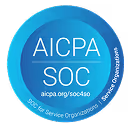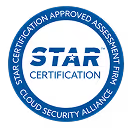Resource management is like piecing together a jigsaw puzzle—each part represents your team members, tools, or project task and has its own place in the big picture. But without a proper plan to set these pieces together, they tend to scatter, leaving you with chaos and confusion. That's why you need to apply the principles of resource planning and scheduling.
Resource planning and scheduling is more than just time management. It ensures that each piece aligns, preventing disorder and driving streamlined productivity. When done right, resource management can transform potential chaos into organized execution that fuels success.
Understanding the basics of resource planning and scheduling in resource management
Resource management may sound complex, but at its core, it revolves around two vital pillars: resource planning and resource scheduling. When these elements work together, they create a streamlined process that ensures projects run smoothly, tasks are completed on time, and resources are utilized efficiently.
In this guide, we'll explore both processes in detail, how they contribute to successful project outcomes, and why they are crucial for optimizing your team’s productivity.
|At Propel24, Ryan Childers and Greg Hensley shared their insights on how you can use resource management as a driver for growth. Read more here.
What is resource planning and scheduling?
Resource planning and resource scheduling are two foundational aspects of effective resource management. While resource planning involves identifying, allocating, and forecasting resources for projects, resource scheduling focuses on assigning these resources to specific tasks and ensuring a smooth workflow.

Definitions
Resource planning is like laying the groundwork before you begin a project. It’s the process of determining what resources are needed, when they’ll be required, and how they’ll be utilized to meet project goals. This includes everything from human resources—like your team’s skills and expertise—to physical assets like equipment, tools, or even office space.
Once you’ve planned your resources, the next step is to schedule them. Resource scheduling involves organizing when and where each resource will be used throughout the project lifecycle. It’s about ensuring that resources are available at the right time for the right task without overloading anyone or anything.
Key components and objectives
Effective resource planning helps ensure you’re not scrambling to find the right people or tools at the last minute. Whether you’re working with tight deadlines or managing multiple projects, resource planning keeps you ahead of the game. It enables you to forecast needs, allocate the right resources, and avoid bottlenecks that could disrupt the project’s progress.
This process is key to avoiding conflicts, like two teams needing the same equipment at the same time, or overlapping deadlines that cause burnout. By strategically assigning tasks and setting timelines, resource scheduling transforms your project into a smooth, well-coordinated effort. Think of it as the choreography that ensures everyone knows when and where to step, making sure the project dances forward without missing a beat.
Definitions
Resource planning is like laying the groundwork before you begin a project. It’s the process of determining what resources are needed, when they’ll be required, and how they’ll be utilized to meet project goals. This includes everything from human resources—like your team’s skills and expertise—to physical assets like equipment, tools, or even office space.
Once you’ve planned your resources, the next step is to schedule them. Resource scheduling involves organizing when and where each resource will be used throughout the project lifecycle. It’s about ensuring that resources are available at the right time for the right task without overloading anyone or anything.
Key components and objectives
Effective resource planning helps ensure you’re not scrambling to find the right people or tools at the last minute. Whether you’re working with tight deadlines or managing multiple projects, resource planning keeps you ahead of the game. It enables you to forecast needs, allocate the right resources, and avoid bottlenecks that could disrupt the project’s progress.
This process is key to avoiding conflicts, like two teams needing the same equipment at the same time, or overlapping deadlines that cause burnout. By strategically assigning tasks and setting timelines, resource scheduling transforms your project into a smooth, well-coordinated effort. Think of it as the choreography that ensures everyone knows when and where to step, making sure the project dances forward without missing a beat.
Importance of resource planning and scheduling
Resource planning and scheduling ensure every resource—people, equipment, or time—is used effectively and in the right place, avoiding budget overruns. Without these processes, teams run the risk of resource conflicts, burnouts, and underutilization, leading to delayed timelines and skyrocketing costs. But with effective resource planning and scheduling, projects stay on track, resources are allocated wisely, and teams work in sync toward a common goal.
Besides dodging disasters, effective planning and scheduling help:
1. Maximize efficiency and productivity
Effective resource planning and scheduling is all about optimizing your resources while determining what you need and when you need it. This way, you can eliminate bottlenecks, prevent downtime, and ensure that no resource is being under or overutilized. This is critical for ensuring that project deadlines are met without putting undue pressure on your team, resulting in smoother workflows and enhanced productivity.
2. Optimize resource utilization
Good resource planning and scheduling means you’re using each resource to its fullest potential. These processes strategically assign tasks and manage workloads to keep everyone engaged and productive. When resources are optimized, teams are not only more efficient but also experience less burnout, contributing to a more motivated and happier workforce.
3. Foster proactive problem-solving
Good resource planning and scheduling help you anticipate problems before they happen. Instead of dealing with last-minute crises or scrambling to find solutions in a time crunch, these processes foster a proactive approach. They allow you to foresee potential roadblocks, manage risks, and make adjustments before issues arise. This keeps your project moving forward and reduces stress for your team by minimizing the need for reactive problem-solving.
4. Reduce project costs and delays
Every mismanaged resource translates into lost time and money. Poor scheduling can lead to overstaffing, under-utilization, or a shortage of essential tools when you need them the most. These inefficiencies can significantly increase project costs and lead to project delays and client escalations. On the other hand, when resources are planned and scheduled properly, you maximize utilization, maintain momentum, and avoid unnecessary expenditures. It also ensures the client is satisfied with the delivery of the project as these processes are all about getting more done with what you have, without compromising on quality.
5. Aligning teams and goals
Resource planning and scheduling create alignment by ensuring that the right resources are allocated to the right tasks at the right time. This ensures everyone is aligned and understands the available resources, timelines, and project objectives. Teams are also more focused, motivated, and collaborative. Clear project schedules eliminate confusion, ensuring that everyone knows what needs to be done and when. This alignment fosters a stronger team dynamic and better communication, which are crucial for project success.
In a nutshell, without proper planning and scheduling, your dream project might just remain that—a dream. These processes ensure that resources are used efficiently, deadlines are met, and teams remain aligned, turning chaos into cohesion. They are your project’s secret weapons for achieving success, minimizing delays, reducing costs, and delivering results.
What factors influence resource planning and scheduling?
Resource planning and scheduling are shaped by various internal and external factors that can either streamline or complicate the process.
One major factor is resource availability—knowing when your team members, equipment, and materials are accessible is crucial. Ensuring the right resources are available at the right time prevents constraints and delays. Then there's the skillset and capability alignment. Assigning tasks to individuals who possess the required skills not only boosts efficiency but also ensures that each team member is working on tasks where they can add the most value.
External factors like stakeholder expectations, budgets, and timelines can also significantly influence resource planning and scheduling decisions. Projects often have to adjust to evolving requirements, cost limitations, or sudden changes in deadlines, making flexibility a key consideration. Additionally, factors such as project complexity, task dependencies, team productivity levels, and resource costs must be carefully analyzed to optimize planning and avoid conflicts. Understanding these variables helps ensure that resource management strategies are both realistic and effective.
5 steps for effective resource planning
Whether you're managing a small team or overseeing a large-scale project, having a structured approach to resource planning ensures that you are fully equipped to meet project goals without hitting unnecessary roadblocks. Here are five key steps that form the backbone of successful resource planning:
- Define project goals and resource requirements
Every successful project begins with a clear understanding of its goals and objectives. By defining what you're trying to achieve, whether it's launching a new product or delivering a client project, you can determine the resources required to make that vision a reality. This step helps in tailoring your resource needs based on the specific goals of the project, ensuring you’re not caught off guard by missing resources later down the line.
- Identify and allocate resources
Once your goals are defined, it’s time to assess what resources you have on hand. This includes identifying your team members, their skills, and other critical assets like tools, equipment, and budget. Allocating resources wisely—matching the right talent to the right tasks—ensures that every part of the project is covered by the most suitable team members, optimizing efficiency from the start.
|Want to know more about how you can use AI to assemble the perfect team for any project? Head here.
- Forecast resource needs
Planning isn’t just about addressing the present needs; it’s also about anticipating future demands. Accurately forecasting resource needs based on project timelines and objectives positions you to navigate unexpected developments, shifts in scope, or additional tasks with confidence and agility. This step is key to avoiding last-minute scrambling for resources and ensures that you stay ahead of potential challenges.
- Implement resource management tools
The right resource management tool can be a game-changer in executing effective projects. These tools allow you to track, allocate, and optimize resources efficiently, giving you real-time visibility into how resources are being used and where adjustments may be necessary. From basic spreadsheets to advanced resource planning software, the right tool can significantly ease the burden of managing complex resource needs.
- Monitor and optimize resource utilization
Resource planning is not a one-time process; it requires ongoing monitoring and adjustments. Regularly reviewing resource usage allows you to identify underutilized resources or areas where there may be bottlenecks. This step ensures that your project remains efficient and that resources are continually optimized to meet evolving project needs.
5 steps for effective resource scheduling
Resource scheduling is where the rubber meets the road in project management. With proper planning, you ensure that all tasks are assigned the right resources, timelines are respected, and no one gets overbooked. It’s all about timing, availability, and ensuring everything runs smoothly. Below are the five essential steps for effective resource scheduling, designed to keep your project on track and adaptable to any changes.
1. Define task durations and dependencies
The first step in effective resource scheduling is defining the durations of each task and identifying dependencies between them. Every task has a specific timeframe, and some may depend on others to be completed before they can start. Knowing these dependencies ensures that the project follows a logical sequence, minimizing downtime, and preventing bottlenecks.
2. Create a resource schedule
Once task durations and dependencies are established, the next step is to assign resources to the appropriate tasks, or to create a resource schedule. This involves allocating team members, tools, or equipment, making sure no one is overbooked or stretched too thin. By aligning your resources with the tasks at hand, you ensure smooth progress and prevent unnecessary delays.
3. Use resource scheduling tools and techniques
Leveraging resource scheduling tools can significantly enhance the efficiency of resource scheduling. Tools like Gantt charts, Kanban boards, and resource scheduling software help automate the process, reducing manual errors. These tools provide visibility into project timelines and resource allocation, allowing real-time adjustments as the project progresses.
4. Manage resource conflicts and adjust schedules
Even with a well-laid-out plan, resource conflicts can still arise. To manage these, it's important to be flexible and adjust the resource schedule when necessary. Whether it’s reallocating team members or shifting task deadlines, resolving conflicts promptly keeps the project on track and avoids potential delays.
5. Regularly review and update the schedule
Resource scheduling is also not a set-it-and-forget-it process. Regular reviews and updates are essential to ensure the resource schedule remains accurate and reflective of the current project status. As tasks are completed, team availability shifts, or new challenges arise, updating the schedule ensures that the project adapts smoothly to changes and stays on course.
These steps form a practical roadmap to mastering resource scheduling and planning, ensuring that your project runs efficiently and can handle any challenges along the way.
Best practices for resource planning and scheduling
Mastering resource planning and scheduling requires more than just setting timelines and assigning tasks. It’s about creating a harmonious project flow where everything runs in sync. To ensure success, here are some best practices to guide you through the process:
- Prioritize flexibility: Projects are dynamic, and changes are inevitable. Keeping your resource schedule adaptable allows you to handle unexpected shifts without throwing off the entire plan.
- Maintain regular communication: Transparent and frequent updates are essential for keeping everyone aligned. Regularly sharing progress and adjusting resource plans helps avoid confusion and ensures the team remains on the same page.
- Monitor resource utilization: Keeping an eye on how resources are used is key to preventing overbooking or idle time. Strive for a balanced workload, ensuring that everyone and everything is operating at optimal capacity.
- Leverage historical data: Learn from past projects to improve future planning. Analyzing historical performance helps predict potential bottlenecks and fine-tune resource allocation.
In essence, effective resource planning and scheduling is like orchestrating a well-tuned symphony, where every player knows their part and timing. Master these practices, and you’ll lead your project to success.
The right tool for your resource planning and scheduling: Rocketlane
When it comes to resource planning and scheduling, choosing the right tool can make all the difference. These tools help you get your resources in order and transform how you manage your projects and people. Without a reliable system, managing resources can feel like juggling chaos—constant back-and-forth emails, clunky spreadsheets, and wasted hours on manual scheduling. The right tool streamlines these processes, bringing clarity and structure to your project delivery. From increased efficiency to better visibility and predictive analysis, the advantages are game-changing, enabling teams to focus on doing the work rather than managing it.
That’s where Rocketlane comes in.
Designed to simplify and streamline your resource planning and scheduling, Rocketlane offers the perfect balance of usability, robust features, and scalability. Its intuitive interface allows for seamless scheduling, real-time adjustments, and powerful analytics, ensuring you stay ahead of project demands. Whether your team is small and agile or growing fast, Rocketlane evolves with your needs, turning chaos into clarity and empowering your team to work smarter, not harder.
If you're looking to master resource management, Rocketlane is the only, all-in-one tool that ensures every piece of your project puzzle fits perfectly into place.
{{demo}}
-min.webp)











